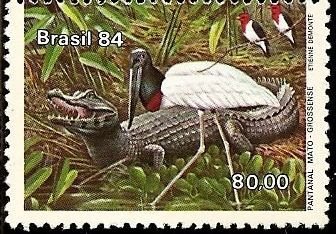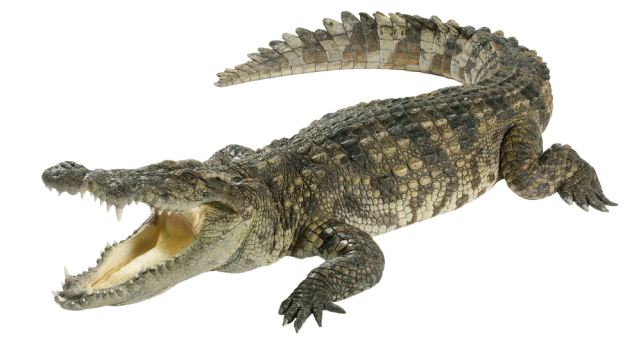Stamp: Red-crested Cardinal, Jabiru, Caiman (Brazil 1984)
Red-crested Cardinal, Jabiru, Caiman (Brazil 1984)
05 June (Brazil ) within release Nature conservation goes into circulation Stamp Red-crested Cardinal, Jabiru, Caiman face value 80 Brazilian cruzeiro
| Stamp Red-crested Cardinal, Jabiru, Caiman in catalogues | |
|---|---|
| RHM: | RHM:BR C-1397 |
Stamp is square format.
Also in the issue Nature conservation:
- Stamp - Egret, Marsh Deer face value 65;
- Stamp - Capybara, Roseate Spoonbill, Jaguar face value 65;
- Stamp - Red-crested Cardinal, Jabiru, Caiman face value 80;
- Se-tenant - Nature conservation face value 210;
|
Data entry completed
50%
|
|
|---|---|
| Stamp Red-crested Cardinal, Jabiru, Caiman in digits | |
| Country: | Brazil |
| Date: | 1984-06-05 |
| Perforation: | 11¾ |
| Emission: | Commemorative |
| Format: | Stamp |
| Face Value: | 80 Brazilian cruzeiro |
Stamp Red-crested Cardinal, Jabiru, Caiman it reflects the thematic directions:
Birds (Aves), a subgroup of Reptiles, are the last living examples of Dinosaurs. They are a group of endothermic vertebrates, characterised by feathers, toothless beaked jaws, the laying of hard-shelled eggs, a high metabolic rate, a four-chambered heart, and a strong yet lightweight skeleton. Birds live worldwide and range in size from the 5 cm (2 in) bee hummingbird to the 2.75 m (9 ft) ostrich. They rank as the class of tetrapods with the most living species, at approximately ten thousand, with more than half of these being passerines, sometimes known as perching birds. Birds are the closest living relatives of crocodilians.
Reptiles are tetrapod (four-limbed vertebrate) animals in the class Reptilia, comprising today's turtles, crocodilians, snakes, amphisbaenians, lizards, tuatara, and their extinct relatives. The study of these traditional reptile orders, historically combined with that of modern amphibians, is called herpetology. Because some reptiles are more closely related to birds than they are to other reptiles (e.g., crocodiles are more closely related to birds than they are to lizards), the traditional groups of "reptiles" listed above do not together constitute a monophyletic grouping (or clade). For this reason, many modern scientists prefer to consider the birds part of Reptilia as well, thereby making Reptilia a monophyletic class.
Crocodiles (family Crocodylidae) or true crocodiles are large semiaquatic reptiles that live throughout the tropics in Africa, Asia, the Americas and Australia. The term crocodile is sometimes used even more loosely to include all extant members of the order Crocodilia, which includes the alligators and caimans (family Alligatoridae), the gharial and false gharial (family Gavialidae) among other extinct taxa.
Environmental protection is the practice of protecting the natural environment by individuals, groups and governments.Its objectives are to conserve natural resources and the existing natural environment and, where it is possible, to repair damage and reverse trends.
Animals are multicellular, eukaryotic organisms of the kingdom Animalia (also called Metazoa). All animals are motile, meaning they can move spontaneously and independently, at some point in their lives. Their body plan eventually becomes fixed as they develop, although some undergo a process of metamorphosis later on in their lives. All animals are heterotrophs: they must ingest other organisms or their products for sustenance.





